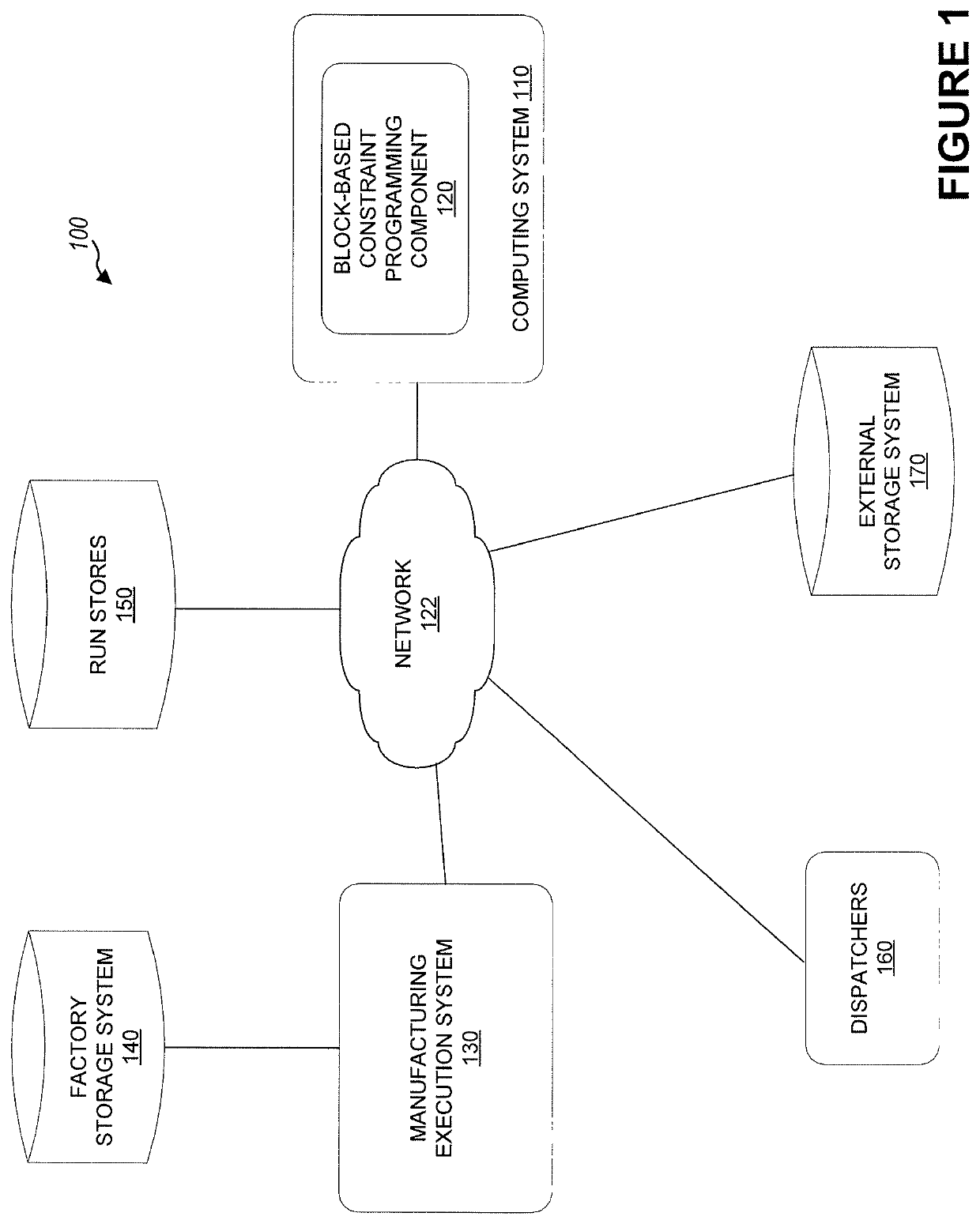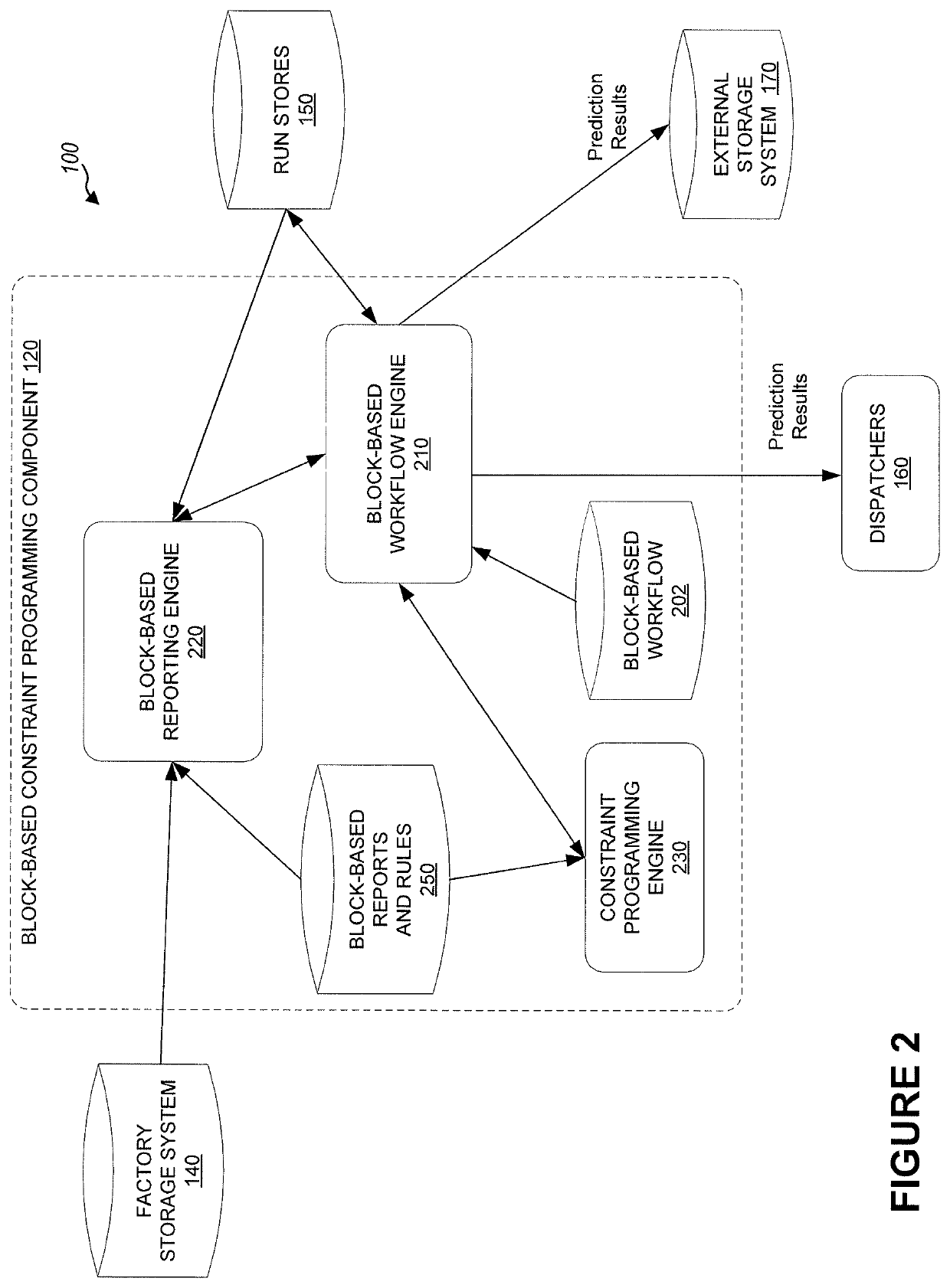Constraint programming using block-based workflows
a workflow and constraint technology, applied in the field of constraint programming, can solve the problems of complex decisions, huge capital requirements for the necessary equipment, tools, facilities,
- Summary
- Abstract
- Description
- Claims
- Application Information
AI Technical Summary
Benefits of technology
Problems solved by technology
Method used
Image
Examples
Embodiment Construction
[0019]Embodiments presented herein present techniques for solving a constraint programming (CP) model in a manufacturing environment, using block-based (BB) workflows. The workflows can be used by an end-user to construct a CP system that creates and determines a solution to a CP model based on data captured from the manufacturing environment and / or constraints defined by the user via the BB workflow, and the solution may be used for scheduling and dispatching within the manufacturing environment (e.g., after being post-processed into a format usable by one or more components of the manufacturing environment and published to the one or more components). For example, each workflow contains an order of a series of operations (e.g., represented by one or more blocks of the workflow) that are performed in order to determine a solution for a CP model. Examples of these operations can include retrieving data from different sources, manipulating and transforming the data into different for...
PUM
 Login to View More
Login to View More Abstract
Description
Claims
Application Information
 Login to View More
Login to View More - R&D
- Intellectual Property
- Life Sciences
- Materials
- Tech Scout
- Unparalleled Data Quality
- Higher Quality Content
- 60% Fewer Hallucinations
Browse by: Latest US Patents, China's latest patents, Technical Efficacy Thesaurus, Application Domain, Technology Topic, Popular Technical Reports.
© 2025 PatSnap. All rights reserved.Legal|Privacy policy|Modern Slavery Act Transparency Statement|Sitemap|About US| Contact US: help@patsnap.com



